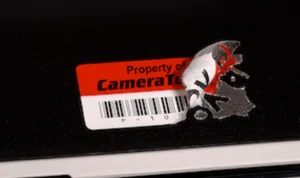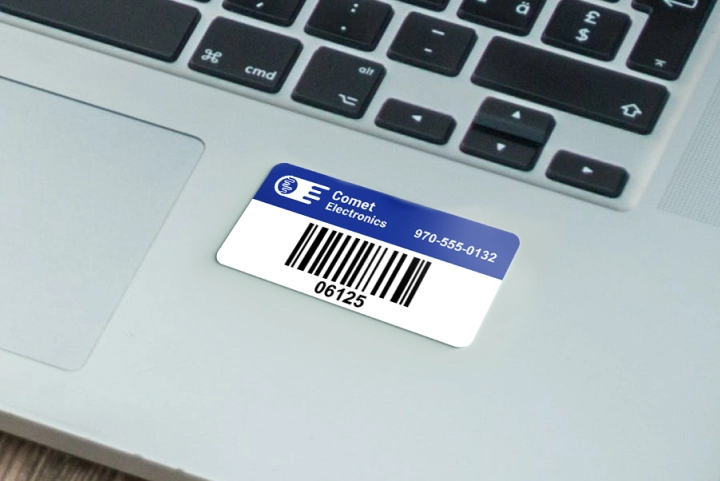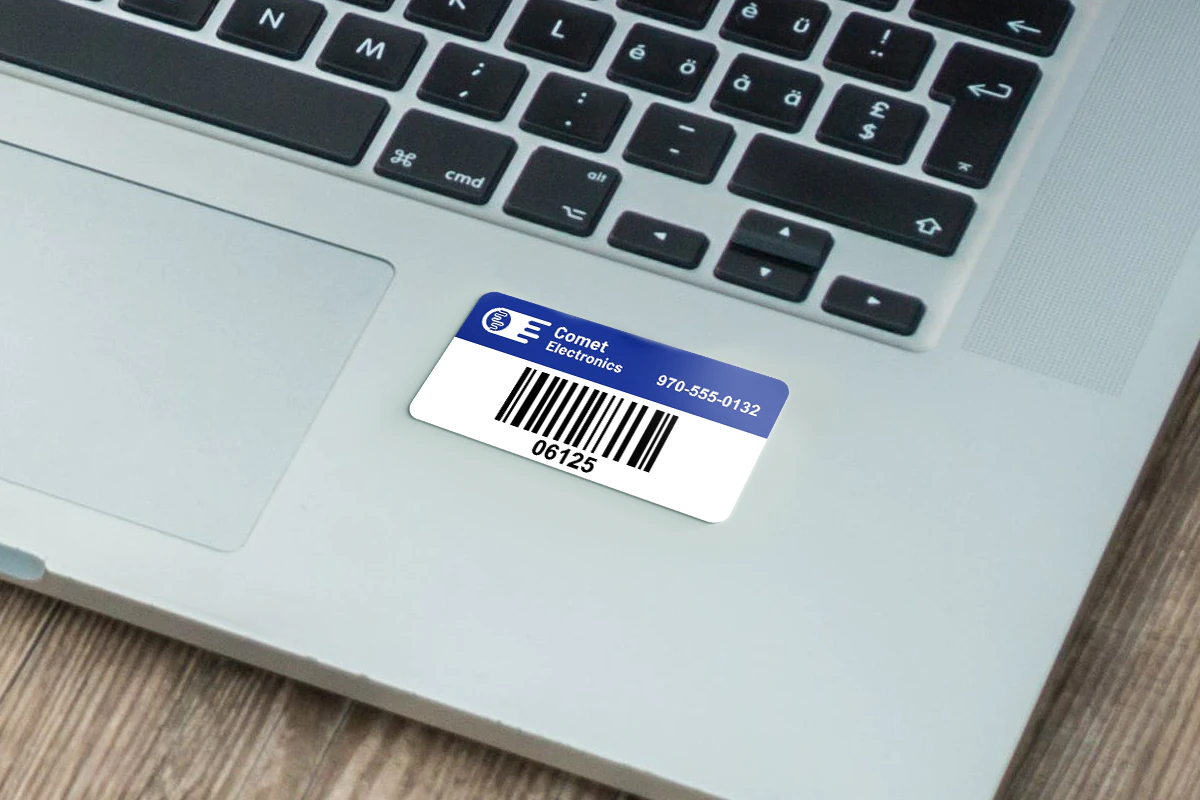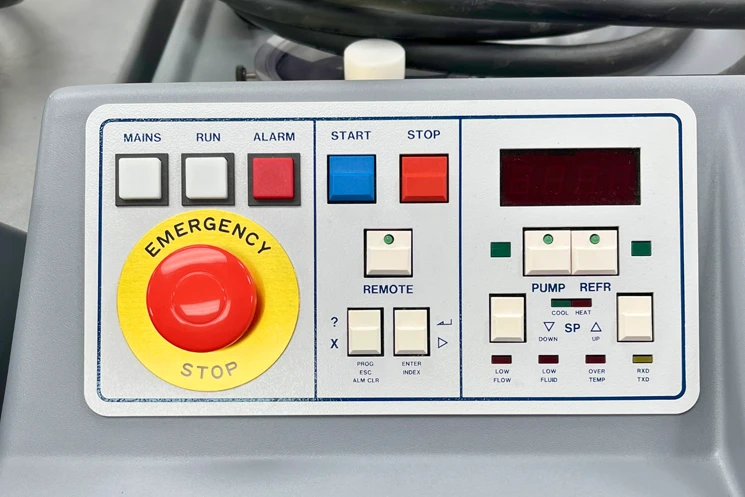Asset tags are labels designed to be placed on items of value. Use asset tags and equipment labels to identify and keep track of your physical assets in real time. Asset tagging is a straightforward but powerful method to safeguard your valuables, streamline asset management, and enhance loss prevention. Here are the top five uses for asset tags:
1. Equipment Tracking
Businesses frequently apply asset tags along with a management system to monitor tools, equipment, and electronics. This method gives each item a unique identification number. This makes it easy to track locations and log maintenance history.
With asset tags, you can set reminders for maintenance history, contract renewals, or expiring lease agreements. It’s also helpful for managing fixed and moveable assets.

2. Loss Prevention
Portable devices like laptops, phones, and AV equipment are easy targets for loss or theft. Barcode labels and QR codes act as deterrents, marking these items as company property and reducing theft risk. Without asset tags, even well-intentioned borrowing can lead to misplaced equipment.
We make our labels from strong materials that work well for both indoor and outdoor use. We also offer tamper-evident options that clearly show if someone tries to remove them.

3. Item Recovery
When an item is lost or stolen, asset tags enable quick identification and return. The unique identifier on each tag, such as a serial number or ID, shows who owns it. This makes recovery easier.
4. Reports & Records
Need to prove asset ownership for a bank loan? An asset register, along with a good asset tracking system, makes asset management easier. It also shows proof of your business assets.
We provide two tags: one for equipment and another for physical records. This makes it easy to cross-reference during audits.
5. Visual Cues & Brand Awareness
With the rise in remote work, tagging company equipment helps separate it from personal belongings. We use tags or labels with numbers and barcodes for valuable items. For less valuable items, we use simpler stickers. Branding these assets also boosts brand awareness when people use them in public.
Our asset tags are fully customizable with barcodes, serial numbers, and your company logo at no additional cost. Choose strong materials like aluminum, anodized metal, metalized polyester, or tamper-resistant stocks. These options fit your needs for indoor, outdoor, or special uses.
Need more details? Visit our Asset Tags page!
Benefits of Asset Tagging
Asset tagging adds significant value by enhancing control and reducing operational risks. When each asset is tagged, businesses gain immediate access to essential details like purchase date, maintenance history, and location, making it easy to keep assets in top condition.
This level of organization minimizes downtime, as employees can quickly locate and deploy the equipment they need without unnecessary delays. It also enables companies to make data-driven decisions regarding asset upgrades or replacements, ultimately saving costs by extending the useful life of their equipment. Furthermore, asset tagging adds a layer of security—knowing that every item is tagged and tracked discourages theft and misuse, which can protect valuable resources and reduce replacement costs.
Asset Tags Usage FAQs
What is the asset tagging process?
The asset tagging process typically involves the following steps:
- Identify the assets to be tagged (e.g., electronics, tools, equipment).
- Assign a unique identifier to each item, such as a serial number or QR code.
- Choose the right tags or labels based on usage and environment, whether it’s indoor, outdoor, or tamper-resistant.
- Apply the asset tags to each item in a visible and accessible location.
- Record each tagged asset in an asset tracking system or management database. Include details like the tag number, item description, location, and maintenance schedule.
- Regularly update the database with any changes to assets, maintenance work, or reassignments. This keeps your records accurate and current.
How do I implement an asset tagging system?
Implementing an asset tagging system is a straightforward process:
- Plan your tagging strategy. Choose which assets to tag. Decide what information you want to track, like location, maintenance history, and ownership.
- Choose the right tags for your needs. You can select from barcode labels, QR codes, tamper-resistant tags, or brand-labeled tags. These options provide extra security and help with branding.
- Use asset management software: Implement a management system or asset tracking software to store and organize your asset data. This system should support your specific tagging format (barcode, QR code, etc.).
- Train your team: Make sure your team knows how to apply tags. They should log assets in the database. They also need to use the asset tracking system for real-time updates.
- Monitor and maintain: Regularly audit your assets to keep the database accurate. Schedule routine maintenance and check-ins to make sure each asset is functioning well and properly accounted for.



